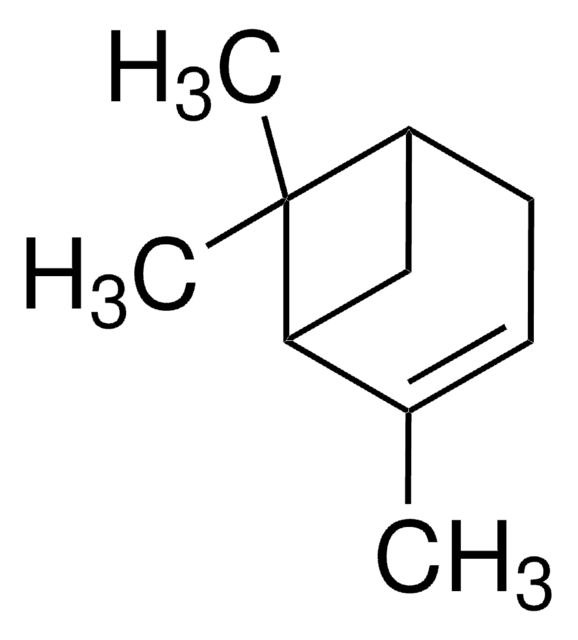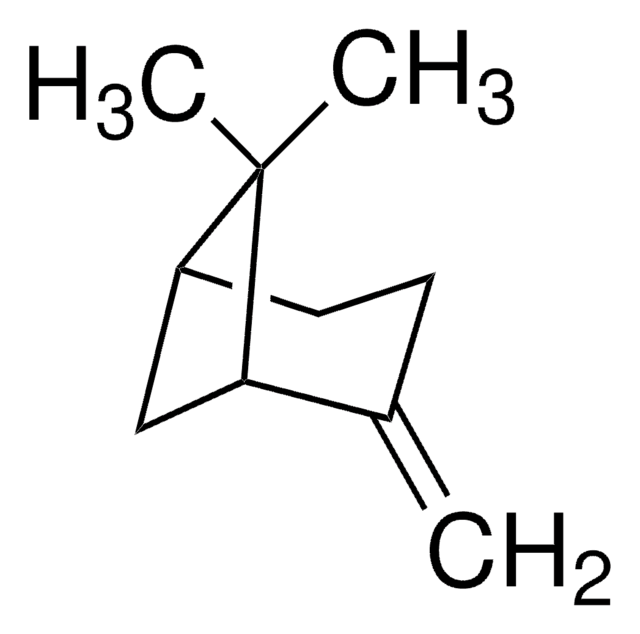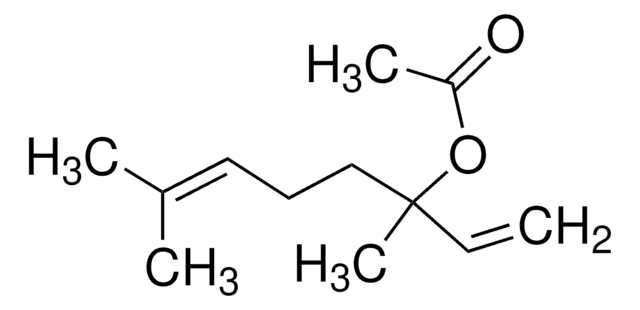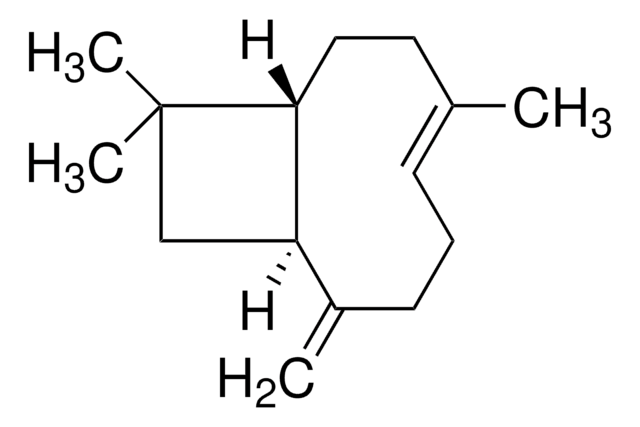W263508
Linalool
≥97%, FCC, FG
Synonym(s):
(±)-3,7-Dimethyl-1,6-octadien-3-ol, (±)-3,7-Dimethyl-3-hydroxy-1,6-octadiene
About This Item
Fragrance grade
Halal
Kosher
Recommended Products
biological source
synthetic
Quality Level
grade
FG
Fragrance grade
Halal
Kosher
Agency
follows IFRA guidelines
meets purity specifications of JECFA
reg. compliance
EU Regulation 1223/2009
EU Regulation 1334/2008 & 178/2002
FCC
FDA 21 CFR 117
FDA 21 CFR 182.60
vapor pressure
0.17 mmHg ( 25 °C)
Assay
≥97%
composition
contains EU 1223/2009 restricted linalool
refractive index
n20/D 1.462 (lit.)
bp
194-197 °C/720 mmHg (lit.)
solubility
ethanol: soluble 1ml/4ml, clear, colorless (60% ethanol)
density
0.87 g/mL at 25 °C (lit.)
application(s)
flavors and fragrances
Documentation
see Safety & Documentation for available documents
food allergen
no known allergens
fragrance allergen
linalool
Organoleptic
lemon; orange; floral; sweet
SMILES string
C\C(C)=C\CCC(C)(O)C=C
InChI
1S/C10H18O/c1-5-10(4,11)8-6-7-9(2)3/h5,7,11H,1,6,8H2,2-4H3
InChI key
CDOSHBSSFJOMGT-UHFFFAOYSA-N
Looking for similar products? Visit Product Comparison Guide
Related Categories
General description
Application
Signal Word
Warning
Hazard Statements
Precautionary Statements
Hazard Classifications
Eye Irrit. 2 - Skin Irrit. 2 - Skin Sens. 1
Storage Class Code
10 - Combustible liquids
WGK
WGK 1
Flash Point(F)
171.0 °F - Pensky-Martens closed cup
Flash Point(C)
77.2 °C - Pensky-Martens closed cup
Personal Protective Equipment
Regulatory Listings
Regulatory Listings are mainly provided for chemical products. Only limited information can be provided here for non-chemical products. No entry means none of the components are listed. It is the user’s obligation to ensure the safe and legal use of the product.
FSL
Group 4: Flammable liquids
Type 3 petroleums
Hazardous rank III
Water insoluble liquid
ISHL Indicated Name
Substances Subject to be Indicated Names
ISHL Notified Names
Substances Subject to be Notified Names
JAN Code
W263508-20KG:
W263508-SAMPLE-K:
W263508-800G:
W263508-BULK-K:
W263508-9KG:
W263508-SAMPLE:
W263508-8KG:
W263508-8KG-K:
W263508-1KG:
W263508-20KG-K:
W263508-9KG-K:
W263508-VAR-K:
W263508-1KG-K:
Choose from one of the most recent versions:
Already Own This Product?
Find documentation for the products that you have recently purchased in the Document Library.
Customers Also Viewed
Global Trade Item Number
| SKU | GTIN |
|---|---|
| W263508-1KG | |
| W263508-1KG-K | 4061837800382 |
| W263508-9KG | |
| W263508-9KG-K | 4061837515743 |
| W263508-SAMPLE-K | 4061837800405 |
| W263508-20KG | |
| W263508-20KG-K | 4061837800399 |
| W263508-8KG | |
| W263508-8KG-K | |
| W263508-SAMPLE |
Our team of scientists has experience in all areas of research including Life Science, Material Science, Chemical Synthesis, Chromatography, Analytical and many others.
Contact Technical Service








